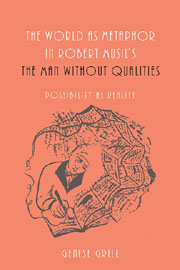4 - Still Life: (Not) Doing What Isn't Done
Published online by Cambridge University Press: 05 February 2013
Summary
Musil began writing the different versions of the chapter “Atemzüge Meines Sommertags” (Breaths of a summer' day) as early as 1937 or even 1934; and, in an almost perfect circling, he was still working on the chapter on 15 April 1942, the day he died. In these chapter drafts, which feature what appears to be a profusion of more metaphors per paragraph than in any other section of the novel, Ulrich and Agathe continue their “holy conversations.” These conversations are part of an epic deferral of physical consummation in their gated garden, which comes to represent an island excepted from normal time and space, a sort of shimmering framed still life. All still lives, Ulrich explains, in one of the many “Umschreibungen” (circuitous rewritings) that he essays in order to both approach and avoid their significance, paint “die Welt vom sechsten Schöpfusngstag; wo Gott und die Welt noch unter sich waren, ohne den Menschen!” (MoE, 1230; the world of the sixth day of creation, when God and the world were still by themselves, with no people!, MwQ, 1325). This is practically the image of their garden, cut off from society, its requirements, its morals, its temporal and spatial laws. And yet there are two people in the picture, in their garden. These two people, although separated from the world by their garden fence, by the special mission that they have assigned themselves, and their exceptional state of shimmering stillness, are both alive — circling, fountaining — moving within an enclosed area.
- Type
- Chapter
- Information
- The World as Metaphor in Robert Musil's 'The Man without Qualities'Possibility as Reality, pp. 119 - 156Publisher: Boydell & BrewerPrint publication year: 2012



